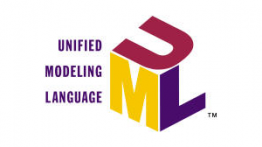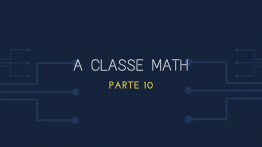Classes Aninhadas
Character.Subset
Character.Subset – Instâncias desta classe representam subconjuntos específicos do conjunto de caracteres Unicode.
Fonte do código: https://www.geeksforgeeks.org/java-lang-character-subset-class-java/
import java.lang.*;
public class CharacterSubsetDemo extends Character.Subset
{
CharacterSubsetDemo(String s)
{
// Use of super keyword :
// Invokes immediate parent class constructor.
super(s);
}
public static void main(String[] args)
{
// Initializing two Subsets.
CharacterSubsetDemo a = new CharacterSubsetDemo("geeks");
CharacterSubsetDemo b = new CharacterSubsetDemo("for");
// use of equals() :
boolean check2 = a.equals(a);
System.out.println("Is a equals a ? : " + check2);
check2 = b.equals(a);
System.out.println("Is b equals a ? : " + check2);
System.out.println();
// Use of hashCode() :
int check1 = a.hashCode();
System.out.println("hashCode " + a + " : " + check1);
check1 = b.hashCode();
System.out.println("hashCode " + b + " : " + check1);
System.out.println();
// Use of toString() :
System.out.println("a : " + a.toString());
System.out.println("b : " + b.toString());
}
}
Character.UnicodeBlock
Character.UnicodeBlock – Uma família de subconjuntos de caracteres que representam os blocos de caracteres na especificação Unicode.
Fonte do código: https://stackoverflow.com/questions/1499804/how-can-i-detect-japanese-text-in-a-java-string
private boolean isCharCJK(final char c) {
if ((Character.UnicodeBlock.of(c) == Character.UnicodeBlock.CJK_UNIFIED_IDEOGRAPHS)
|| (Character.UnicodeBlock.of(c) == Character.UnicodeBlock.CJK_UNIFIED_IDEOGRAPHS_EXTENSION_A)
|| (Character.UnicodeBlock.of(c) == Character.UnicodeBlock.CJK_UNIFIED_IDEOGRAPHS_EXTENSION_B)
|| (Character.UnicodeBlock.of(c) == Character.UnicodeBlock.CJK_COMPATIBILITY_FORMS)
|| (Character.UnicodeBlock.of(c) == Character.UnicodeBlock.CJK_COMPATIBILITY_IDEOGRAPHS)
|| (Character.UnicodeBlock.of(c) == Character.UnicodeBlock.CJK_RADICALS_SUPPLEMENT)
|| (Character.UnicodeBlock.of(c) == Character.UnicodeBlock.CJK_SYMBOLS_AND_PUNCTUATION)
|| (Character.UnicodeBlock.of(c) == Character.UnicodeBlock.ENCLOSED_CJK_LETTERS_AND_MONTHS)) {
return true;
}
return false;
}
Character.UnicodeScript
Character.UnicodeScript – Uma família de subconjuntos de caracteres que representam os scripts de caracteres definidos no Anexo # 24 do Padrão Unicode: Nomes de Scripts.
Campos
BYTES
BYTES – O número de bytes usados para representar um valor de char no formato binário não assinado.
public static final int BYTES – O número de bytes usados para representar um valor de char no formato binário não assinado.
Esse campo existe desde a versão 1.8.
Veja também:
COMBINING_SPACING_MARK
COMBINING_SPACING_MARK – Categoria geral “Mc” na especificação Unicode.
public static final byte COMBINING_SPACING_MARK – Categoria geral “Mc” na especificação Unicode.
Esse campo existe desde a versão 1.1.
Veja também:
Fonte do código: https://stackoverflow.com/questions/29110887/detect-any-combining-character-in-java
String codePointStr = new String(new byte[]{(byte) 0xe1, (byte) 0x9f, (byte) 0x80}, "UTF-8"); // unicode 17c0
System.out.println(codePointStr.matches("\\p{Mc}"));
System.out.println(
Character.COMBINING_SPACING_MARK == Character.getType(codePointStr.codePointAt(0)));
CONNECTOR_PUNCTUATION
CONNECTOR_PUNCTUATION – Categoria geral “Pc” na especificação Unicode.
public static final byte CONNECTOR_PUNCTUATION – Categoria geral “Pc” na especificação Unicode.
Esse método existe desde a versão 1.1.
Veja também:
CONTROL
CONTROL – Categoria geral “Cc” na especificação Unicode.
public static final byte CONTROL – Categoria geral “Cc” na especificação Unicode.
Esse método existe desde a versão 1.1.
Veja também:
CURRENCY_SYMBOL
CURRENCY_SYMBOL – Categoria geral “Sc” na especificação Unicode.
public static final byte CURRENCY_SYMBOL – Categoria geral “Sc” na especificação Unicode.
Esse método existe desde a versão 1.1.
Veja também:
Fonte do código: http://www.java2s.com/Tutorials/Java/java.lang/Character/Java_Character_CURRENCY_SYMBOL.htm
public class Main{
public static void main(String[] args) {
for(char ch = Character.MIN_VALUE;ch<Character.MAX_VALUE;ch++){
if(Character.CURRENCY_SYMBOL == Character.getType(ch)){
String s = String.format ("\\u%04x", (int)ch);
System.out.println(s);
}
}
}
}
DASH_PUNCTUATION
DASH_PUNCTUATION – Categoria geral “Pd” na especificação Unicode.
public static final byte DASH_PUNCTUATION – Categoria geral “Pd” na especificação Unicode.
Esse método existe desde a versão 1.1.
Veja também:
Fonte do código: http://www.java2s.com/Tutorials/Java/java.lang/Character/0120__Character.DASH_PUNCTUATION.htm
public class Main{
public static void main(String[] args) {
for(char ch = Character.MIN_VALUE;ch<Character.MAX_VALUE;ch++){
if(Character.DASH_PUNCTUATION == Character.getType(ch)){
String s = String.format ("\\u%04x", (int)ch);
System.out.println(s);/*from ww w . j a v a 2 s .c om*/
}
}
}
}
DECIMAL_DIGIT_NUMBER
DECIMAL_DIGIT_NUMBER – Categoria geral “Nd” na especificação Unicode.
public static final byte DECIMAL_DIGIT_NUMBER – Categoria geral “Nd” na especificação Unicode.
Esse método existe desde a versão 1.1.
Veja também:
Fonte: https://docs.oracle.com/en/java/javase/14/docs/api/java.base/java/lang/Character.html






Deixe um comentário